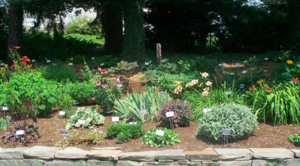
In terms of plants, the term perennial refers to plants that live more than two years. Usually the reference is not being made to larger plants, such as trees or large shrubs but relates to smaller plants often grown in gardens, such as herbs, flowers, small bushes and similar smaller plants.
Perennial plants continue to grow within their lifespan. This means that they can be divided to reproduce more in different parts of the garden. Of course, it is essential to research the division as relates to the specific species before undertaking it though, as different plants have varying needs in terms of when to divide and how.
Perennials tend to flower for a short time during the relevant season, although this will vary on the type of plant. However, the plant as a whole lasts a long time and often flowers regularly yearly.
The end part of a perennial plant's life cycle tends to see them turn scraggly and skeletal, no longer looking vigorous or lush. At this point, gardeners have to make a decision to remove the plant and replace it with a stronger, new version.
Perennials treated as annuals[edit | edit source]
In some cases, the features of certain perennial plants or the climate of the area where the perennial plants are grown leads to the gardener treating them as annuals. This may be due to the fact that the soil, climate or nature of the plant itself tends to see the plant thrive only in its first year or two, after which it doesn't perform as well as the gardener may wish. In these cases, the perennial plants might be used as flowerbed or edge enhancements, only to be removed at the end of the warm season (such as with pelargoniums or fuchsias).
If the winter is harsh, some perennials will not survive if not native to the area. In this case, they may be treated either as an annual and left to die or they may be brought indoors to survive the winter in a container, then returned to the garden when the weather warms again.
Uses for perennials[edit | edit source]
Perennial plants reduce gardening, food cropping and other costs, as they don't need to be replanted annually but can provide food, shelter, shade, animal fodder, garden colour, garden fragrance, medicinal properties, dye, etc., for a longer time.
Although perennials don't flower as often as annuals, or for a shorter time, they are often interesting in their own right, such as having visually appealing leaf shapes or interesting textures of the plant as a whole.